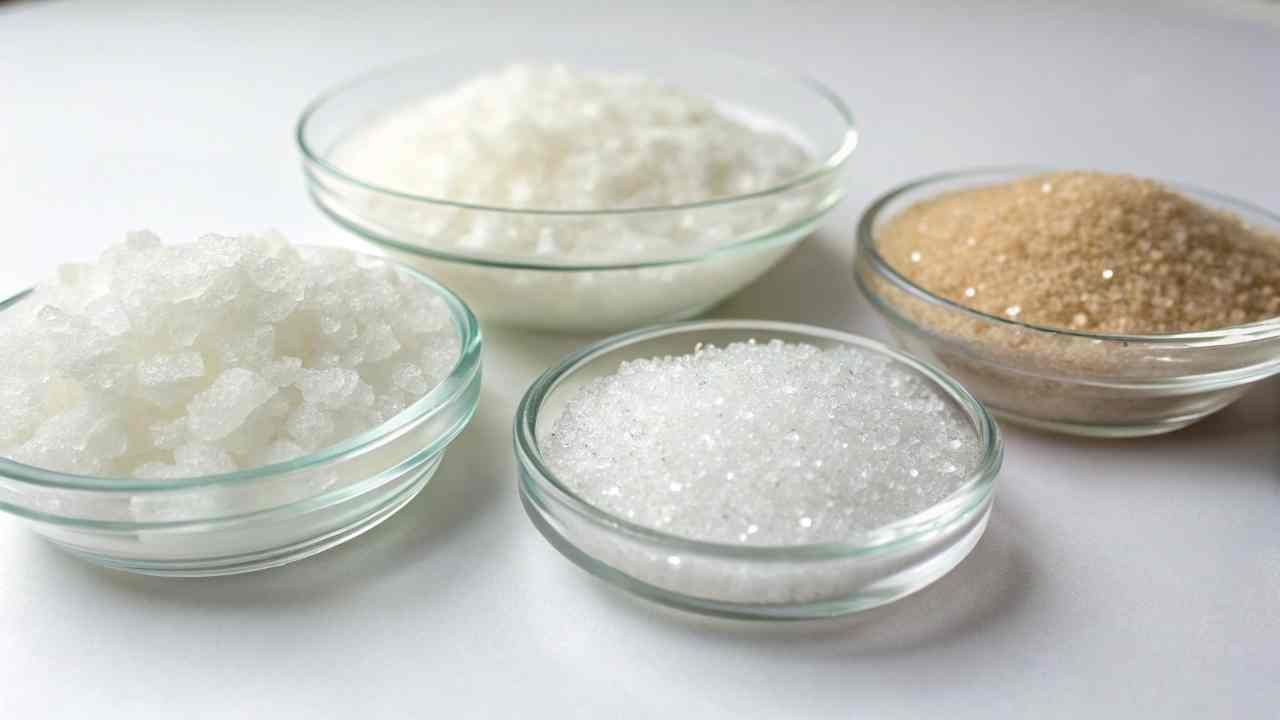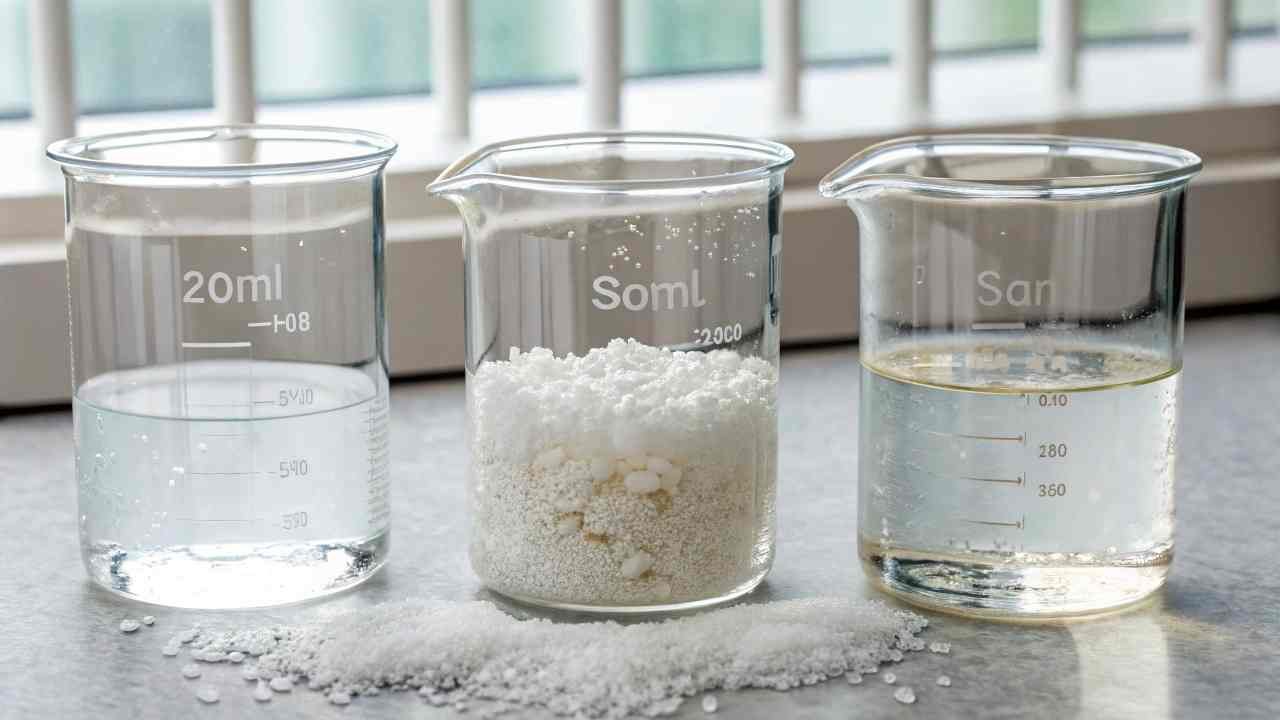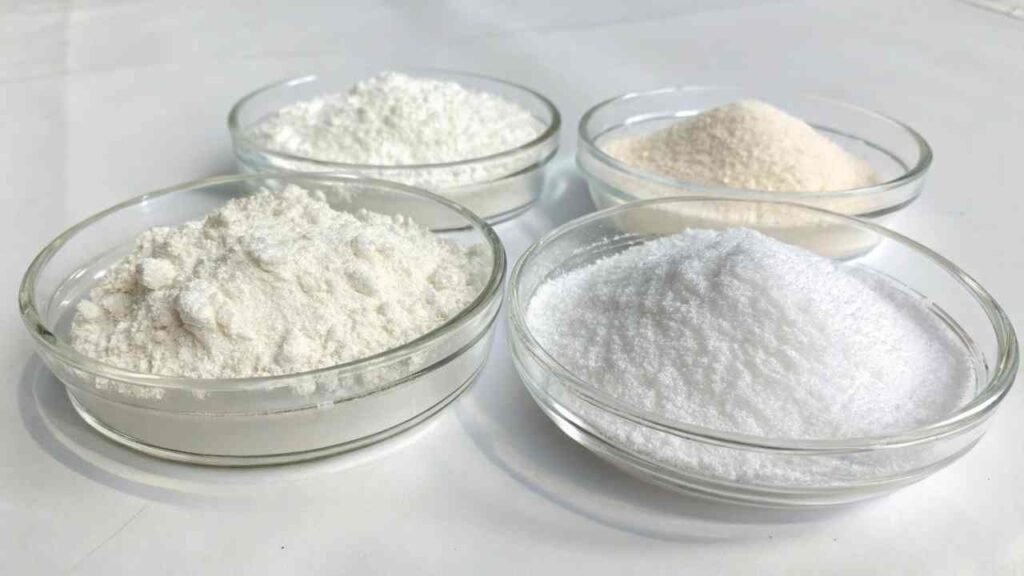Choosing sodium saccharin feels complex? The wrong spec can ruin your product. Let's make it simple to pick the right one.
To choose the right spec, match the mesh size to your application for dissolution, blend with other sweeteners to fix the aftertaste, and always demand certified food-grade for purity and safety.
At FINETECH, getting specs right is key. Clients need ingredients that perform correctly and meet all quality standards. Let's quickly break down how to choose sodium saccharin.
What's different between Sodium Saccharin meshes?
See mesh sizes like 20-40 and feel confused? Picking the wrong one causes problems. Let's clarify what these numbers mean.
Mesh size defines particle size. A higher number (40-80 mesh) means smaller, finer particles that dissolve fast. A lower number (8-12 mesh) means larger, coarser crystals that dissolve slowly.

Mesh size1 is a critical spec. It determines how the ingredient behaves in production.
- Low Mesh (e.g., 10-20): Coarse crystals. Low dust, but dissolves slowly. Good for tabletop sweeteners or some dry mixes.
- High Mesh (e.g., 40-80): Fine powder. Dissolves quickly, but is dusty. Best for beverages, syrups, and sauces.
- Medium Mesh (e.g., 20-40): A good all-around choice. Balances dissolution speed with manageable dust.
Using the wrong mesh causes issues like gritty texture (if too coarse) or dust hazards (if too fine). Matching the mesh to your application is the first step.
Mesh Size Guide:
| Mesh Size | Particle Size | Key Feature | Best For |
|---|---|---|---|
| 10-20 Mesh | Coarse | Slow Dissolving | Tabletop sweeteners |
| 20-40 Mesh | Medium | Good Balance | General Food, Powdered Drinks |
| 40-80 Mesh | Fine | Quick Dissolving | Beverages, Sauces |
Why does particle size change Sodium Saccharin?
Think all saccharin powders are the same? Particle size changes everything. Let's see why this matters so much for your product.
Particle size dictates sodium saccharin's dissolution speed, dustiness, and how well it mixes. Smaller particles dissolve faster but are dusty; larger particles are less dusty but dissolve slower.

Particle size affects key properties:
- Dissolution Rate2: Fine powders have more surface area and dissolve much faster than coarse crystals. This is critical for liquid products.
- Handling (Dust): Fine powders are lightweight and create dust, requiring safety controls. Coarse crystals are heavier and less dusty.
- Uniformity3: To get an even mix in a dry blend, the saccharin particle size should be similar to the other main ingredients (like citric acid) to prevent separation.
Choosing the right particle size ensures efficiency and safety in your factory.
Property Comparison:
| Property | Fine Particles (40-80 mesh) | Coarse Particles (10-20 mesh) |
|---|---|---|
| Dissolving | Fast | Slow |
| Dustiness | High | Low |
| Blending | Best with fine powders | Best with coarse powders |
How does Sodium Saccharin affect mouthfeel?
Tasted a gritty sugar-free drink? Undissolved saccharin is likely the cause. Let's ensure your product feels perfectly smooth.
Sodium saccharin affects mouthfeel if it doesn't dissolve completely, creating a gritty, sandy texture. Using a fine mesh (like 40-80) ensures it dissolves fully, leading to a smooth mouthfeel.

Grittiness is a major quality flaw. It happens when saccharin particles are too big to dissolve in the product's liquid. The solution is to match the mesh size to the application:
- For liquids and semi-solids (beverages, yogurts, sauces): Always use a fine mesh like 40-80 mesh. This guarantees rapid and complete dissolution for a smooth texture.
- For baked goods: A medium mesh like 20-40 mesh is often fine, as the saccharin will dissolve in the batter during mixing and baking.
A smooth mouthfeel is crucial for consumer satisfaction. Choose the mesh size that guarantees it.
How to fix Sodium Saccharin aftertaste?
Hate the metallic aftertaste of saccharin? This common issue can ruin a product. Here are the professional solutions.
Fix saccharin's aftertaste by blending it with other sweeteners like cyclamate, aspartame, or acesulfame-K. This creates a synergistic effect for a cleaner, more sugar-like taste. The spec itself won't fix the aftertaste.

The bitter/metallic aftertaste is a property of the saccharin molecule itself. You can't change it by picking a different spec. The solution is smart formulation.
Synergistic Blends4: Combining sweeteners masks each other's off-notes and creates a better overall taste.
- Saccharin + Cyclamate: A very cost-effective classic blend. Excellent at masking bitterness.
- Saccharin + Aspartame / Ace-K: Common in beverages. Provides an upfront, intense sweetness with a cleaner finish.
Blending is the industry standard for creating great-tasting, sugar-free products.
How is food-grade Sodium Saccharin different?
What does 'food-grade' really mean? Using the wrong grade is a huge risk. Let's define this critical difference.
Food-grade sodium saccharin is different because of its high purity and strict limits on harmful impurities like heavy metals (lead, arsenic). It must meet official standards like USP or FCC and come with a Certificate of Analysis (CoA).

"Food-grade" is a non-negotiable safety standard. It means the product complies with official compendia (USP, FCC, etc.) that set strict limits on harmful substances.
Key differences from technical grade:
- High Purity (Assay)5: Guaranteed high concentration (e.g., >99%).
- Low Heavy Metals: Extremely low, safe levels of lead and arsenic.
- Fewer Impurities: Limits on other residual chemicals from production.
- Certification: Comes with a CoA to prove it meets standards.
Using non-food-grade material is dangerous and illegal. At FINETECH, we guarantee all our products meet these strict food-grade standards.
Conclusion
To pick the right sodium saccharin, match mesh to your process, use blends to fix the aftertaste, and always demand certified food-grade for safety. This ensures quality.
-
Understanding mesh size is crucial for optimizing ingredient behavior in production processes. ↩
-
Understanding how particle size influences dissolution rate can enhance product formulation and efficiency. ↩
-
Exploring the significance of uniformity can improve mixing processes and product quality in various applications. ↩
-
Exploring synergistic blends can reveal innovative ways to enhance sweetness and mask undesirable flavors. ↩
-
Exploring the significance of high purity can help you grasp its impact on safety and quality in food production. ↩


